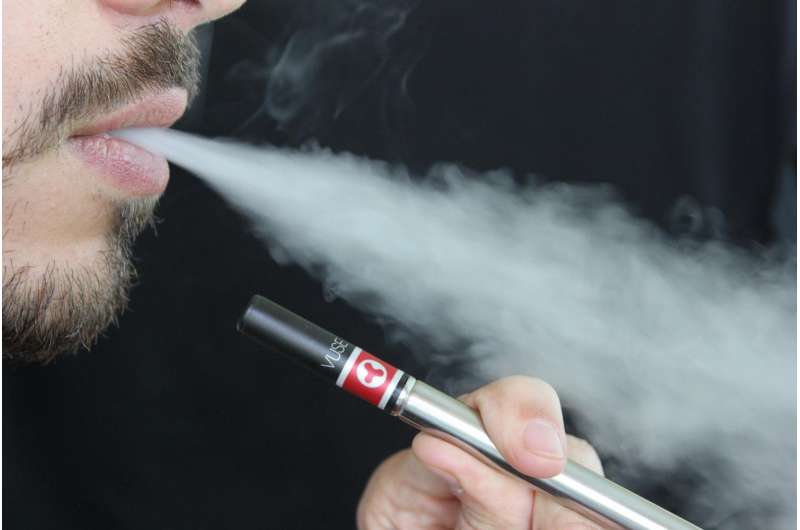High use of electronic cigarettes seen in 8th-9th graders in Oregon

A study at Oregon Research Institute (ORI) shows that rates of electronic cigarette (e-cigarette) use among Oregon 8th and 9th graders is higher than seen in national samples, and that e-cigarette use is closely linked with use of marijuana and other tobacco products. Led by ORI scientist Erika Westling, Ph.D., study investigators examined e-cigarette prevalence rates in 8th graders and tracked early usage patterns from 8th grade through 9th grade, the first year of high school. Westling and her team also examined gender, ethnicity, and the use of other substances. Study results were recently published in the June 2017 issue of the Journal of Adolescent Health.
The study showed that adolescents are using e-cigarettes at high rates, and many are using e-cigarettes before trying regular cigarettes or chewing tobacco. In addition, e-cigarette users were more likely to have used and be using other substances, with marijuana being the most common. At the beginning of the study, 27.7% of 8th grade students reported some use of e-cigarettes and 16.8% were current users. By the spring of 9th grade, 31.4% of students had used e-cigarettes and 17.4% were current users.
"We found that e-cigarettes were being used at much higher rates than conventional cigarettes," noted Westling, "and about 5% of students were using e-cigarettes daily in the 9th grade, which suggests addiction to nicotine via e-cigarettes in these young adolescents."
The research team surveyed 1100 Oregon students from seven school districts once at the end of 8th grade and three times across 9th grade. Results indicated there were no significant gender or ethnicity differences in prevalence of use in 8th grade or in accelerated usage rates through 9th grade. Males, females, Hispanics, and non-Hispanics were at equal risk for trying and escalating use of e-cigarettes over time. This reveals the broad appeal, access, and popularity of e-cigarettes to this population, and indicates that anti-e-cigarette marketing strategies should target all of these groups.
"Our data was collected prior to regulation of e-cigarettes by the Food and Drug Administration (FDA). There are currently no limits on advertising, flavorings, or e-liquid content, and e-cigarettes are being heavily marketed to youth," said Westling. "Given the high rates of use and previous marketing efforts, youth access to and willingness to use c-cigarettes may not be easily changed."
The FDA finalized the "deeming" rule effective August 8, 2016 to regulate new tobacco products, including e-cigarettes, which will likely result in product standards and prevent misleading claims about the relative risk of tobacco products in the future. However, these regulations will not be in effect for several more years. Currently, the majority of adolescents perceive e-cigarettes as having minimal risks to health or addiction. Only a quarter of high school students know that e-cigarettes typically contain nicotine. Young adolescents are especially vulnerable to nicotine addiction, and symptoms of addiction in adolescence predict regular smoking in emerging adulthood. A recent Surgeon General's report on e-cigarettes and youth notes that there are significant known deleterious health effects resulting from nicotine exposure in adolescence, including changes to the developing brain.
More information: Erika Westling et al, Electronic Cigarette Use by Youth: Prevalence, Correlates, and Use Trajectories From Middle to High School, Journal of Adolescent Health (2017). DOI: 10.1016/j.jadohealth.2016.12.019


















